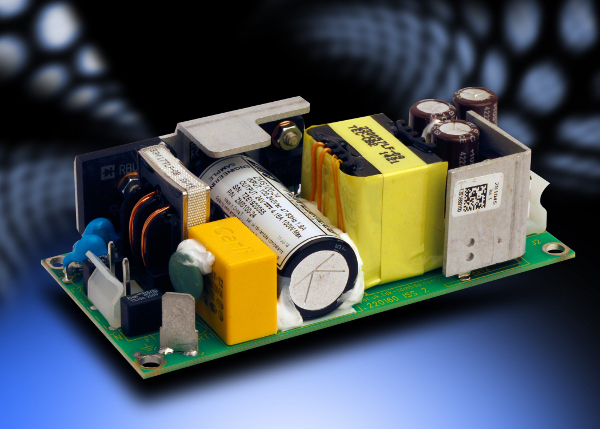Vous pouvez aussi nous contacter en nous appelant au:
Bibliothèque Technique
ZMS100 Single Output Medical Power Supplies FAQ
Sélectionnez votre question dans la liste ci-dessous
-
Peut-on utiliser les alimentations ZMS pour des applications en classe II ?
This video exlains that the ZMS100 can be used in class II equipment
Nos vidéos sont hébergées par Vimeo. En visionnant ce contenu, vous acceptez les conditions et la politique de confidentialité énoncées sur le site Web de Vimeo.
-
Quels sont le niveau du courant de fuite et de réjections conduites (EMI) des alimentations ZMS ?
This video explains the levels of leakage current and emi for ZMS100 power supplies
Nos vidéos sont hébergées par Vimeo. En visionnant ce contenu, vous acceptez les conditions et la politique de confidentialité énoncées sur le site Web de Vimeo.
-
Quels sont la consommation à vide et le rendement des alimentations ZMS ?
This video explains the no load consumption and efficiency for ZMS100 power supplies
Nos vidéos sont hébergées par Vimeo. En visionnant ce contenu, vous acceptez les conditions et la politique de confidentialité énoncées sur le site Web de Vimeo.
-
Quel type de matériau pour les contacts des connecteurs dois-je utiliser pour raccorder mon alimentation?
Open frame power supply manufacturers typically use a supplier such as Molex or JST for their input and output connectors. These connectors are low cost, readily available, reliable and easy to use. In addition, it makes it easier for the customer to second source a power supply, if required, when some standardisation exists.
Many power supply manufacturers will specify the mating connector series name in their product documentation, but will often leave it up to the user to determine the actual part numbers. This usually provokes a call to TDK-Lambda’s Technical Support for a recommendation.
Why do we do this?
Let’s take the industry standard low power 2×4” single output power supply. The Molex KK® 09-50-3041 housing is widely specified as the output mating connector. Made of nylon, it has a friction lock and 4 circuits; 2 for the + output and 2 for the – output.
When looking for the mating pin, one has to be a little more careful. The suggested pin for the connector is available in 2 materials; brass and phosphor bronze.
Brass is a common material for contacts and pins. It is low cost, has good conductivity and generally dependable in a benign, low temperature environment like an office.
Phosphor bronze, on the other hand, should be considered for more challenging environments.
At higher temperatures, brass contacts can lose their spring properties unlike phosphor bronze – if there is some vibration, this can cause reliability issues. Brass does have better conductivity, so check current rating capability.
Phosphor bronze is more expensive, 8p compared to 3p for brass (1000 piece pricing from a distributor). For a 2×4” power supply that could add 36p to the bill of material cost.
The user will have to consider the environment and desired field life.
As a note, on higher power 2×4″ open frame power supplies (~100W), there are alternatives to the single point of contact KK® style pins, such as those used with Molex’s 09-50-1041 housing (SPOX™ series). These have multiple points of contact for lower resistance.
As Molex advised: “Different terminals have different performance and different characteristics.”
More information about the ZMS100 series of 100W 2×4″ power supplies
-
Vidéo ZMS: Comment la durée de vie des alimentations ZMS est maximisée ?
This video exlains how service life is maximised on our ZMS100 power supplies
Nos vidéos sont hébergées par Vimeo. En visionnant ce contenu, vous acceptez les conditions et la politique de confidentialité énoncées sur le site Web de Vimeo.
-
Quels sont les points clés des alimentations ZMS100?
The following video explains the key features of the ZMS range
Nos vidéos sont hébergées par Vimeo. En visionnant ce contenu, vous acceptez les conditions et la politique de confidentialité énoncées sur le site Web de Vimeo.
-
Est-ce que les alimentations ZMS100 sont approuvées pour le médical?
The following video explains the medical approvals of the ZMS100 range
Nos vidéos sont hébergées par Vimeo. En visionnant ce contenu, vous acceptez les conditions et la politique de confidentialité énoncées sur le site Web de Vimeo.
N'hésitez pas à nous contacter si vous ne trouvez pas ce que vous recherchez

